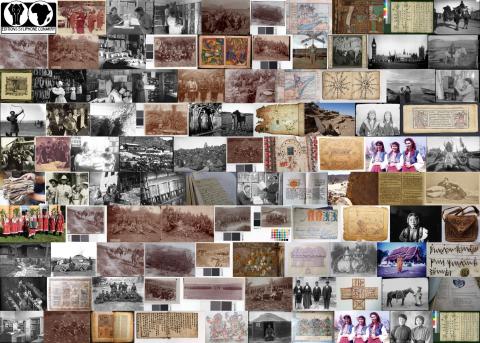Aims and objectives
There are small collections of documents in the Riau Archipelago, which may throw new light on our appreciation of the wider Malay-Muslim world. However, these collections are in private hands, have not had the benefit of professional archival care, and are being cannabilised for commercial sale by antique hunters. There is a strong possibility of these documents being lost forever if this situation continues unchecked.
This proposal is aimed at saving these endangered works by making digital images of them, archiving them and placing the copies in repositories where free access is available to all scholars interested in Islam, and political dynamics, culture, language, literature and society in the Malay world. Also some basic provisions for the preservation of the documents will be provided, as well as advice how to preserve them best in the conditions of their location.
The Riau Archipelago spreads over a vast geographic area in the triangle between Sumatra, Singapore and the Borneo . During the nineteenth century the area was part of the Dutch East Indies and considered to be the core area of Malay language and culture, and the heir to the legendary port/state of Malacca. In their endeavour to standardize the Malay language, Dutch officials collected manuscripts from the archipelago; these manuscripts became the basis for a standard grammar and dictionary of the Malay language. This collection process not only resulted in several large repositories of Malay manuscripts, but also kindled a renaissance of Malay writing at the court of Riau and beyond. The remnants of this manuscript and book culture can still be found in private collections of books and manuscripts scattered throughout the region.
A well-known centre for this book culture was the island of Penyengat, once the seat of the viceroy, where the most famous Malay Islamic scholar of the nineteenth century, Raja Ali Haji (1809-1873), lived and worked as well as cultivated an interest for books and study in his siblings and subsequent generations. Most of the research carried out on this revival of Malay writing has centred around Penyengat and Raja Ali Haji, while possible similar developments in other islands, such as Lingga (once the seat of the sultan), Natuna, Karimun, and others have passed unnoticed.
The opportunity to view a (complete) collection in situs provides insights into the configuration and formation activities of its establisher(s). Relatively large collections of (mostly) nineteenth-century Malay manuscripts have led to a distorted vision of Malay intellectual history, as they were selected by colonial officials or missionaries with their own time-bound predilections. Establishing the composition as well as the contents of private collections will enhance our understanding of the configuration of an indigenous epistemology.
This project aims to preserve through digitisation and list private collections of documents for future generations to enhance possibilities to gain a better understanding of Malay intellectual history. The preservation of these documents is important for the people who own them, as well as as for scholars who want to study the dissemination of ideas throughout the Malay World.
Outcomes
13 collections on 4 different islands in the region were digitised, amounting to approximately 8,000 photographs of 450 items. These comprised handwritten manuscripts, printed archival materials (forms, receipts, grants) and a few printed books.
A special gathering was organised on one of the islands to disseminate information about the project and exposure was sought in local newspapers and television for the same purpose. A workshop was held for invited manuscript owners and others to generate interest in manuscripts and provide information on the safe handling and storage of these documents.
It proved to be very difficult to gain access to some collections: the suspicions of some are strong and historical documents and manuscripts form part of people’s cultural heritage, which they do not relinquish easily.
No manuscripts were removed from repositories where they were found and therefore the original material is still with the owners.
Digital copies have been given to the owners and have also been deposited with the British Library and local archival partners: the National Library of Singapore, Perpustakaan Nasional Republik Indonesia, and Yayasan Manuskrip Nusantara.
This article gives an insight into the work of Alex Teoh, who was the conservation consultant for this project and is featured in the picture gallery above.
The records copied by this project have been catalogued as:
- EAP153/1 A Suk Suwirno Manuscript Collection [1846-1953]
- EAP153/2 Museum Dinas Kebudayaan dan Pariwisata Kota Tanjungpinang Collection [1807-1963]
- EAP153/3 Aswandi Syahri Collection [1832-1942]
- EAP153/4 Tengku Muhammad Fuad Collection [1910-1930]
- EAP153/5 Manuscripts temporarily in the possesion of dealer Kairullah
- EAP153/6 Syamsu Adnan K Collection of Manuscripts [1912-1931]
- EAP153/7 Raja Muhammad Amin Collection of Manuscripts and Printed Books [20th century]
- EAP153/8 Raja Fahrul Collection of Islamic Manuscripts
- EAP153/9 Raja Syu’ib bin Raja Muhamad Zein Collection of Islamic Didactic Manuscripts
- EAP153/10 Museum Linggam Cahaya Collection
- EAP153/11 Tengku Muhammad Saleh Collection of Manuscripts and Printed Books
- EAP153/12 Said Hodri bin Said Hasan Al-Abas Collection of Islamic Manuscripts
- EAP153/13 Raja Hamzah Yunus Collection at the Balai Maklumat Kebudayaan Melayu Riau
Due to the cyber-attack on the British Library in October 2023, the archives and manuscripts database is currently inaccessible and we are unable to provide links to the catalogue records for this project.





